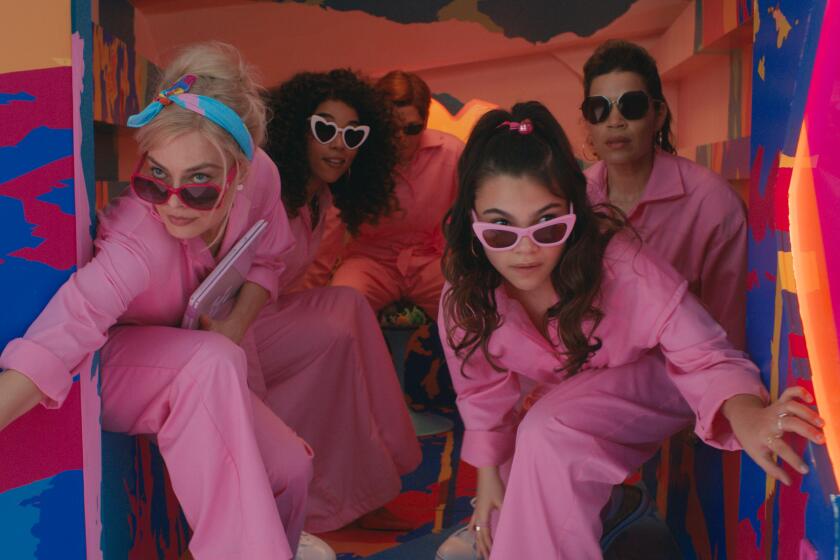Hollywood studios still aren’t hiring many women and people of color to direct films

- Share via
Greta Gerwig, Taylor Swift and Beyoncé had the industry proclaiming 2023 the Year of the Women.
Even The Times heralded 2023 as the year women saved Hollywood, pointing to the commercial success of films such as “Barbie” and the “Eras” and “Renaissance” concert movies.
Yet despite the accolades, Hollywood studios are still falling short of translating such success to actual gains in diversity. That’s according to the latest findings by the University of Southern California’s Annenberg Inclusion Initiative, which found that progress in hiring women and people of color as film directors stalled last year.
The study ultimately cast the blame on the hiring practices of major Hollywood studios. It also blasted the studios’ promises for more inclusion after George Floyd’s murder and the #StopAsianHate movement as “performative acts” and “not real steps towards fostering change.”
Winning the box office, playing record-setting concert tours, rallying striking unions, shaking up TV: Women ruled pop culture in 2023.
“One film or one director are simply not enough to create the sea change that is still needed behind the camera,” the study said. “Until studios, executives, and producers alter the way they make decisions about who is qualified and available to work as a director on top-grossing films, there is little reason to believe that optimism is warranted.”
The study, published Tuesday, looked at the top-grossing films from 2007 to 2023 and found that last year, of the 116 directors included in the study, 12.1% were women. That’s slight progress from 2022, when 9% of top-grossing directors were women.
Women of color fared even worse, making up only 3.4% of top-grossing directors in 2023. That’s few enough to count on one hand: Adele Lim, “Joy Ride”; Celine Song, “Past Lives”; Fawn Veerasunthorn, “Wish”; and Nia DaCosta, “The Marvels,” who was the only Black female director to crack the list. However, that was still a slight increase from the 2.7% seen in the 2022 study.
Cate Blanchett, Coco Francini, professor Stacy L. Smith and USC’s Annenberg Inclusion Initiative are launching a program to help new filmmakers tell stories about women, and trans and nonbinary people.
And for directors from underrepresented racial and ethnic groups across the board, including Black, Latino and Asian creators, a similar story plays out. In 2023, less then a quarter of directors were from underrepresented racial/ethnic groups. This is consistent with the approximately 20% of directors in 2022 who were people of color and several steps backward from 2021, which saw nearly 30%.
The authors of the study, USC professors Stacy Smith, founder of the initiative, and Katherine Pieper, the program’s director, went on to underline root causes for this lack of progress.
“For the companies and industry members who want to believe that the director problem is fixed, it is nowhere near solved,” Smith said in a statement announcing the study. “To see real progress, the process for making hiring decisions must change, and the reasons women and people of color still face obstacles must be addressed.”
Obstacles cited by the study authors include lack of access to money to finance projects, resulting in a lack of sample work to show to studios that are hiring. Suggested solutions included activism calling for fair hiring and the studios simply changing their hiring practices from within.
The study called on studios to have more diversified candidate lists when hiring for projects, getting rid of the idea that a film with a white male acting lead needs a white male director, as well as the idea that hiring a woman or person of color to helm a movie is still a “risk.”
“When the entertainment industry thinks director, they still think male,” the authors said. “In particular, they think white male.”
Times staff writers Tracy Brown, Greg Braxton and Meg James contributed to this report.
More to Read
Only good movies
Get the Indie Focus newsletter, Mark Olsen's weekly guide to the world of cinema.
You may occasionally receive promotional content from the Los Angeles Times.










